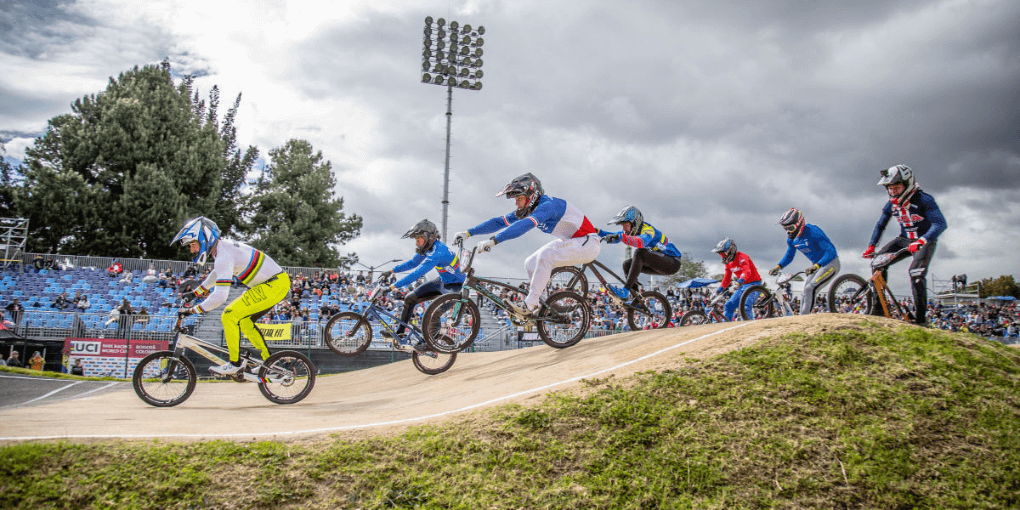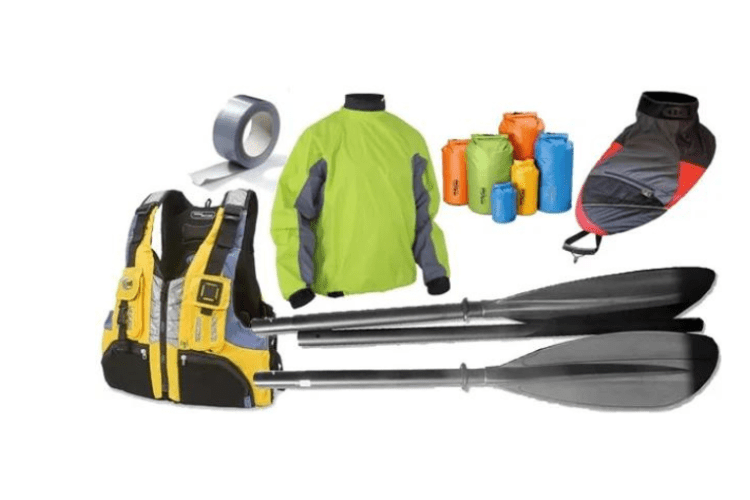BMX World: Adrenaline-Fueled Thrills And Chills
“BMX is more than just a sport; it’s a lifestyle. It teaches you discipline, determination, and the courage to push your limits.” – Jamie Bestwick
Just imagine riding your BMX bike, wind hitting on your face as you do cool tricks in the air. It’s like a thrilling adventure. So, welcome to the BMX world.

This blog post is all about BMX riding. I’ll discuss the history, different types of riding, famous events, and the thrill of BMX. Also, we’ll explore its cultural significance and what’s next for the sport.
History of BMX
The history of BMX bikes traces back to the late 1960s and early 1970s in Southern California.
The term “BMX” stands for Bicycle Motocross, reflecting its roots in motocross racing.
These early riders, inspired by motocross stars like Evel Knievel, adapted their bikes for dirt tracks and jumps, leading to the creation of the first BMX-specific bikes.
In 1974, the first BMX-specific bike, the Schwinn Sting-Ray, was introduced, followed by other manufacturers producing bikes designed specifically for off-road riding.
As BMX racing gained popularity, organizations like the National Bicycle League (NBL) and the American Bicycle Association (ABA) were established to organize races and events.
Throughout the 1970s and 1980s, BMX continued to grow in popularity. The 1980s saw the introduction of freestyle BMX.
It is characterized by riders performing tricks and stunts on ramps, street obstacles, and skateparks.
This era also saw the rise of BMX legends like Mat Hoffman and Dave Mirra, who pushed the boundaries of what was possible on a BMX bike.
In the 1990s and 2000s, BMX continued to evolve with the emergence of new disciplines like dirt jumping, park riding, and street riding.
Advances in bike technology, including lighter and stronger materials such as chromoly steel and aluminum, further propelled the sport forward.
Today, BMX remains a dynamic and diverse sport with a rich history and passionate community.
From Olympic competitions to grassroots events, BMX continues to captivate riders of all ages around the world.
It carries on the legacy of innovation and adrenaline that began decades ago in Southern California.
Types of BMX bikes
There are different types of BMX bikes. Each type of BMX bike has its own unique characteristics, suited for different styles of riding.
BMX Racing Bikes
These bikes are designed for speed and agility on dirt tracks. They have lightweight frames, smaller wheels, and knobby tires for maximum traction.
BMX racing bikes often feature a single gear and a rigid fork for efficient power transfer.
Freestyle BMX Bikes
Freestyle BMX bikes are built for performing tricks and stunts in skateparks, on ramps, and in the streets.
They have sturdy frames with reinforced tubing to withstand the impact of jumps and tricks.
Freestyle bikes have a rotor or gyro system that allows the handlebars to spin freely without tangling the brake cables.
Dirt Jump BMX Bikes
These bikes are specifically designed for launching off jumps and riding dirt trails. They feature strong frames, durable components, and high-rise handlebars for better control in the air.
Dirt jump bikes have slightly larger wheels and wider tires for stability on rough terrain.
Flatland BMX Bikes
Flatland BMX bikes are tailored for performing intricate tricks on smooth surfaces, such as parking lots or flat ground.
They have shorter frames and lower handlebars for better maneuverability and balance. Flatland bikes often have pegs on the wheels for foot support during tricks.
Park BMX Bikes
Park BMX bikes are similar to freestyle bikes but are optimized for riding in skateparks and on-ramps.
They have lightweight frames, responsive handling, and smooth-rolling tires for maximum performance on transitions and obstacles.
Street BMX Bikes
Street BMX bikes are built for riding urban landscapes, including stairs, rails, and ledges.
They have durable frames and components, with a focus on strength and reliability for withstanding the rigors of street riding.
Street bikes often feature pegs and hub guards for grinding on rails and ledges.
BMX Equipment and Gear
So, when you’re getting ready to hit the BMX track or the streets, there are a few things you absolutely need to have. Let’s break it down.
Essential Gear
First up, bikes. Obviously, you can’t ride without one! Then, there’s your helmet – super important for keeping your noggin safe.
Don’t forget about pads, like knee and elbow pads, because they can save you from some nasty scrapes and bruises.
And finally, you’ve got your specialized gear, like gloves and shoes made just for BMX riding. These might seem like little things, but they make a big difference.
Quality Matters
Now, let’s talk about why it’s crucial to invest in good gear. Sure, you could grab any old bike and helmet, but if you want to stay safe and perform your best, quality gear is key.
Cheap stuff might not hold up as well in crashes, and it might not be as comfortable or durable. Also, when you’re doing crazy tricks, you want gear that won’t let you down.
Personal Touch
One of the coolest things about BMX is that you can make your gear your own. Riders love customizing their bikes and picking out gear that reflects their style.
Some riders go for bright colors and flashy designs, while others prefer a more low-key look. It’s all about what makes you feel good and confident when you’re out on the track or grinding rails.
Top BMX Events and Competitions
Let’s dive into the exciting world of BMX competitions. Here you will learn about famous events like the X Games and meet incredible riders who perform jaw-dropping tricks.
What are the big BMX competitions?
BMX is a super fun sport where people do tricks on special bikes. Let’s learn about some of the coolest BMX competitions around the world.
The Big BMX Competitions
X Games: The X Games are like the Olympics for extreme sports. They have amazing BMX tricks that everyone loves to watch.
FISE World Series: FISE is a series of events in different cities with lots of extreme sports, including BMX. It’s always exciting and lots of fun.
UCI BMX World Championships: This is where the best BMX riders from all over the world compete to become world champions. It’s a big deal and super exciting to watch!
Famous BMX Riders and Their Awesome Tricks
BMX riders are like superheroes on bikes. Let’s talk about some of the coolest BMX riders and the awesome tricks they do in competitions. From crazy jumps to perfect landings, these riders are amazing.
Thrills and Challenges of BMX Riding
It’s about the exciting and tough parts of BMX!
Adrenaline Rush
BMX is all about feeling the thrill and excitement. It’s like a big burst of energy when you’re riding, doing tricks, and feeling the wind rush past you. It’s super intense and exciting.
Risks and Challenges
But hey, BMX isn’t all fun and games. There are risks, like getting hurt or feeling scared when you try new tricks.
It takes a lot of guts and determination to keep going, even when things get tough. BMX riders are brave and never give up.
Rider Stories
Want to know what it’s really like to ride BMX? Let’s hear from the riders themselves. They’ll tell you about their most thrilling moments, like landing a crazy trick or conquering their fears.
It’s inspiring to hear how they push themselves to the limit and keep chasing that adrenaline rush.
Impact of BMX on Culture and Society
How BMX impacts culture and society? From media representation to youth influence and sporting inclusivity. BMX transcends boundaries, leaving a lasting impression worldwide.
Youth Culture
BMX is more than just a sport—it’s a way of life for many young people. It’s all about being different and doing your own thing.
BMX riders are like rebels, breaking the rules and showing off their unique style.
Media and Pop Culture
You can’t talk about BMX without mentioning its presence in movies, video games, and music.
From classic films like “Rad” to popular video games like “Tony Hawk’s Pro Skater,” BMX is everywhere in pop culture. It’s cool, it’s exciting, and it’s always pushing boundaries.
Sporting Community
BMX isn’t just for a select few—it’s for everyone. It promotes diversity and inclusivity, welcoming riders of all backgrounds and abilities.
Whether you’re young or old, male or female, BMX is a sport where everyone can come together and have fun.
Future of BMX
So, what’s next for BMX? Well, let’s see what might happen in the future.
Predictions
BMX might become even more popular, with more people riding bikes. We might also see BMX in more movies and on TV. Who knows? Maybe one day BMX will be in the Olympics!
Emerging Trends
Look out for new stuff in BMX, like better bikes and cool tricks. People are always finding new ways to ride bikes, and they share their videos online for everyone to see.
Challenges and Opportunities
BMX has some tough stuff to deal with, like being safe online. But there are also chances for BMX to get even cooler, with more people joining in and sharing their love for the sport.
Conclusion
In closing, BMX riding is not only a sport but also a thrilling way of life that brings lots of excitement. From its start on the streets to its popularity now, BMX has become a fun and thrilling sport.
Now is the time to get involved and try BMX for yourself. Whether you like fast racing, cool tricks, or jumping off ramps, there’s a BMX adventure waiting for you. Put on your helmet, get on your bike, and join in on the fun.
As we think about why BMX is so appealing, it’s because it’s exciting and makes us feel strong.
BMX isn’t just about doing tricks; it’s about facing challenges and enjoying the ride. Let’s keep BMX alive and encourage others to join us in this awesome sport.
FAQs
BMX stands for Bicycle Motocross. It's a sport that involves riding specially designed bikes on various terrains, performing tricks, jumps, and stunts.
BMX biking originated in the 1960s and 1970s when young people were inspired by motorcycle racing and started organizing their own races on dirt tracks. The first official BMX race took place in California in 1963.
There are three main types of BMX bikes: race bikes designed for high-speed racing on BMX tracks, freestyle bikes for performing tricks and stunts, and dirt jumpers for riding on dirt trails and ramps.
Essential BMX equipment includes a bike, helmet, pads (such as knee and elbow pads), gloves, and specialized shoes made for BMX riding. Quality gear is crucial for safety and optimal performance.
Some famous BMX events include the X Games, the FISE World Series, and the UCI BMX World Championships.
These events showcase incredible BMX tricks and feature top riders from around the world.
The future of BMX looks promising, with potential growth in popularity and visibility. Emerging trends include advancements in bike technology and new tricks.
BMX may continue to expand its presence in the media and potentially become an Olympic sport.


